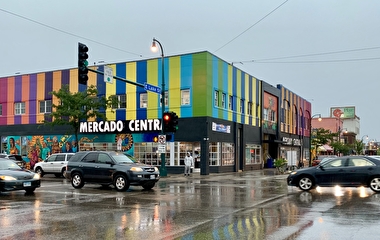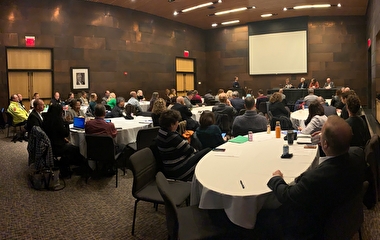Modern public transit networks are one way a disease outbreak can spread rapidly throughout a region, particularly in areas where a large portion of the population lives and commutes in increasingly dense conditions. As a result, the ability to identify components of the public transit system most likely to be carrying infected individuals during an outbreak is critical to planning for and controlling the spread of outbreaks.
In a new study, researchers outlined a novel method to identify the components of a public transit system that are most likely to transport infected passengers and therefore play a vital role in the continued spread of infection during an outbreak.
“We defined a new network structure—the vehicle trip network—that is capable of representing the entire system in a compact way,” says Alireza Khani, an assistant professor in the Department of Civil, Environmental, and Geo- Engineering. “Redefining passenger movements using this novel network structure provides a way to efficiently identify the critical components of the network that should be targeted for surveillance and control in efforts to mitigate an ongoing outbreak.”
Khani collaborated with Lauren M. Gardner and András Bóta of the Research Centre for Integrated Transport Innovation at the University of New South Wales on the study. It was funded by Australia’s National Health and Medical Research Council; a paper about the study appears in the Journal of Networks and Spatial Economics.
For the study, the researchers used public transportation data from a major U.S. transit system to conduct a four-stage data analysis. First, they simulated the movement of nearly 300,000 passengers in the entire regional transit network; then, they generated a passenger contact network using the simulation results.
Next, they used the passenger contact network to model how infection spreads between individuals during epidemic outbreaks based on contact patterns and a range of outbreak scenarios. These scenarios varied based on the number and location of initially infected individuals as well as disease characteristics, representing both naturally occurring and malicious introductions of infection into the system. During this stage, researchers also interpreted passenger-level outbreak results to determine the risk posed at the vehicle level.
In the final two stages of data analysis, researchers created and modeled their vehicle trip network, which is significantly smaller than the passenger contact network. Their network was capable of accurately identifying the majority of high-risk trips, even when real-world data uncertainty of passenger infection levels and travel patterns was introduced.
“Because of its smaller size, the metrics of the vehicle trip network are significantly easier to compute than running the entire simulation model multiple times, which gives this new network structure a significant computational advantage,” Khani says.
Using this approach would make it easier to identify transit system hot spots that should be closely monitored and potentially targeted for outbreak control in real time. “The vehicle trips identified by the model to be at highest risk would be optimal locations to implement vehicle surveillance,” Khani says. “Identifying the critical spreading components of the transit system can aid public health authorities in deploying surveillance resources in the most strategic and cost-effective way in order to mitigate outbreaks.”



